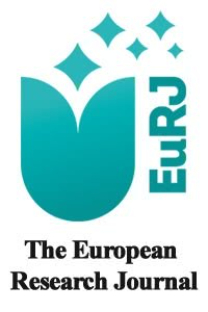Comparing the closure of hepatocaval ligament using stapler or suturing in liver surgery
Comparing the closure of hepatocaval ligament using stapler or suturing in liver surgery
Liver transplantation, hepatocaval ligament, hepatectomy suture, stapler,
___
- 1. Langman J. Medical embryology, ed 3. Baltimore, Williams & Wilkins. 1975.
- 2. Heloury Y, Leborgne J, Rogez JM, Robert R, Barbin JY, Hureau J. The caudate lobe of the liver. Surg Radiol Anat 1988;10:83-91.
- 3. Lortat-Jacob JL, Robert HG. Un cas d’hépatectomie droite réglée. Mem Acad Chir 1952;78:224-52.
- 4. Couinaud C. Le foie, études anatomiques et chirurgicales, Paris, Masson. 1957.
- 5. Dindo D, Demartines N, Clavien PA. Classification of surgical complications : a new proposal with evaluation in a cohort of 6336 patients and results of a survey. Ann Surg 2004;240:205-13.
- 6. Makuuchi M, Hasegawa H, Yamazaki S, Takayasu K. Four new hepatectomy procedures for resection of the right hepatic vein and preservation of the inferior right hepatic vein. Surg Gynecol Obstet 1987;164:68-72
- 7. Morjane A, Dahmane R, Ravnik D, Hribernik M. Anatomy and surgical relevance of the hepato-caval ligament. A study on cadaveric livers. Cells Tissues Organs 2008;187:243-6.
- 8. Gadžijev E, Stanisavljević RD, Trotovšek B. Venous drainage of the dorsal sector of the liver: differences between segments I and IX. A study on corrosion casts of the human liver. Surg Radiol Anat 1997;19:79-83.
- 9. Mackenzie S, Dixon E, Bathe O, Sutherland F. Intermittent hepatic vein – total vascular exclusion during liver resection: anatomic and clinical studies. J Gastrointest Surg 2005;9:658-66.
- 10. Rosset E, Brunet C, Meunier B, Marie PA, DiMarino V, Argeme M, et al. Anatomic basis of the liver for the development of a perihepatic prosthesis. Surg Radiol Anat 1995;17:1-5.
- 11. Melendez JA, Arslan V, Fischer ME, Wuest D, Jarnagin WR, Fong Y, et al. Periopera tive outcomes of major hepatic resections under low central venous pressure anesthesia: blood loss, blood transfu- sion, and the risk of postoperative renal dysfunction. J Am Coll Surg 1998;187:620-5.
- 12. Correa-Gallego C, Gonen M, Fischer M, Grant F, Kemeny NE, Arslan-Carlon V, et al. Perioperative complications influence recur- rence and survival after resection of hepatic colorectal metastases. Ann Surg Oncol 2013;20:2477-84.
- 13. Amato A, Pescatori M. Perioperative blood trans- fusions for the recurrence of colorectal cancer. Cochrane Database Syst Rev 2006;1:CD005033.
- 14. Kooby DA, Stockman J, Ben-Porat L, Gonen M, Jarnagin WR, Dematteo RP, et al. Influence of transfusions on perioperative and long-term outcome in patients following hepatic resection for colorectal metastases. Ann Surg 2003;237:860-9.
- 15. Ramacciato G, Balesh AM, Fornasari V. Vascular endostapler as an aid to hepatic vein control during hepatic resections. Am J Surg 1996;172:358-62.
- 16. Dudeja V, Jarnagin W. Massive Intraoperative Hemorrhage During Hepato-Biliary and Pancreatic Surgery. In: Pawlik T, Maithel S, Merchant N. (eds) Gastrointestinal Surgery. Springer:New York, NY. 2015: pp. 201-15.
- ISSN: 2149-3189
- Yayın Aralığı: 6
- Başlangıç: 2015
- Yayıncı: Prusa Medikal Yayıncılık Limited Şirketi
Omer Fatih NAS, Muhammet OZTEPE, Selman CANDAN, Sedat Giray KANDEMİRLİ, Cem BİLGİN, Mehmet Fatih İNECİKLİ, Güven ÖZKAYA, Gokhan ONGEN, Cüneyt ERDOGAN
Meltem KARACAN GÖLEN, Dilek YILMAZ OKUYAN
Evaluation of novel ventricular repolarization parameters in patients with acromegaly
Hayati EREN, Selin GENÇ, Bahri EVREN, İbrahim ŞAHİN
Investigation of general surgery consultations in COVID-19 patients treated in a tertiary hospital
Mehmet Eşref ULUTAŞ, Kemal ARSLAN
Primary bone diffuse B cell lymphoma of the thoracic spine: a rare entity
Emrah AKÇAY, Hüseyin Berk BENEK, Hakan YILMAZ, Alper TABANLI, Alaattin YURT
Mehmet Emin PARLAK, Osman KÜÇÜKKELEPÇE, Dilek ENER, Erdoğan ÖZ, Volkan BAYAR
Is primary dysmenorrhea affected by gray matter volumetric changes in the brain?
Gizem ÖZER, Pınar KAYGIN, Onur DİRİCAN, Serpil OĞUZTÜZÜN, Sezen YILMAZ SARIALTIN, Gülçin GÜLER ŞİMŞEK, Ayşegül ERDEM, Murat KILIÇ, Tülay ÇOBAN
Elif ERTURK, Mehmet SARİMAHMUT, Mustafa Şehsuvar GÖKGÖZ, Sahsine TOLUNAY
Importance of paravertebral muscle quality in the etiology of degenerative lumbar spinal stenosis
